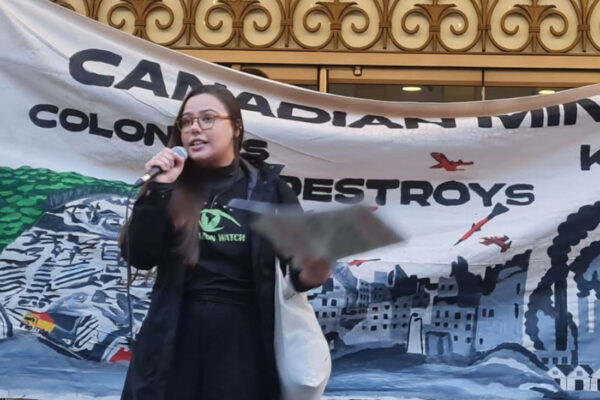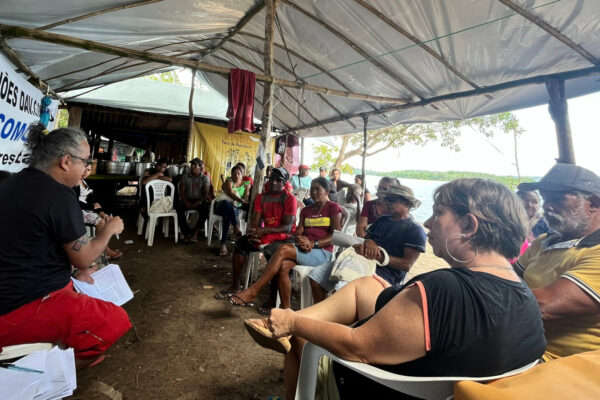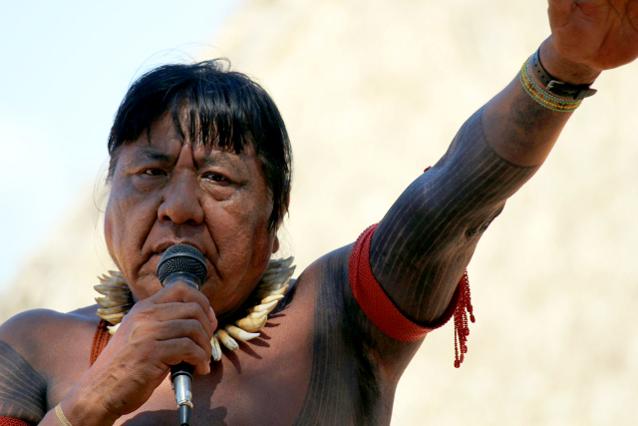
Blended into the deciduous forests of Mato Grosso in Brazil’s Upper Xingu River basin, the village of Piaraçu is as much a home to the Kayapó people as a symbol of their fortitude, forged by sustained cultural and political struggle for rights and territory. It is also where, after decades of indigenous resistance against the damming of the Xingu, the Kayapó are leading last ditch attempts to defend the river, its peoples, and its forests from the impending Belo Monte Dam Complex.
In Piaraçu for three days, I had the honor of participating in an extraordinary, inspiring, and historic gathering of 320 indigenous representatives from 18 ethnicities from the Xingu basin and beyond. We were joined as well by leaders of the Xingu Alive Forever Movement (MXVPS), who brought news from endangered communities of Altamira. Called by the legendary elder Kayapó Chief Raoni Metyktire, this assembly aimed to discuss the impending human rights and environmental disaster that is the Belo Monte Dam on the Lower Xingu – in particular the menace it represents to Brazil’s indigenous peoples – and ways for its opponents to forge a single and unified force to resist its construction.
The days and nights of the Kayapo meeting were marked by fierce speeches denouncing Belo Monte and its government protagonists, punctuated by the spontaneous and colorful dances of different groups that demonstrated the rich cultural diversity of those in attendance. Their bodies streaked with intricate body paint designs and adorned with beads, feathers, and bright headdresses, leaders and warriors brandished long battle clubs and bows, shaking them defiantly at the government that has chosen to dismiss them, ignoring their pleas and trampling on their rights. As the meeting progressed, the piercing songs of men and women grew in intensity, matched by their anger and thirst for justice and recognition, bearing witness to the power of these people, who are committed to overcoming severe and escalating threats to their way of life.
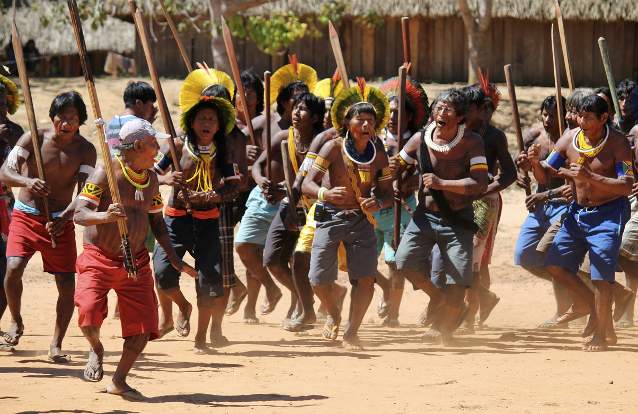
As the dominant indigenous group of the Xingu basin, the Kayapó have a history of bold and victorious confrontation with outside forces, gaining them hard won legal recognition for their ancestral lands, which make up an enormous mosaic of demarcated territories spanning a long stretch of the Xingu River and its tributaries. Traditional guardians of their forests and rivers, the Kayapó were the driving force behind the defeat of the Brazilian government’s first plans to dam the Xingu – known then as the Kararaô Complex – in 1989.
Yet 21 years later the Xingu River and its people are imperiled like never before, this time by the Belo Monte Dam Complex, slated to carve the world’s third-largest dam into the heart of the Amazon. The Kayapó are keenly aware that the Belo Monte Dam will not be a stand-alone project, despite dubious government pronouncements, but rather will initiate a process that drives a series of massive cement walls up the Xingu, strangling up the river basin, wiping out fish stocks so central to local diets while decimating surrounding forests and communities. This life-giving river is sacred to its indigenous peoples and its healthy flow – free of dams – is imperative to those who gathered in Piaraçu.
Nowhere was the urgent need for courageous Kayapó leadership more apparent than in the statements of Antônia Melo, Sheyla Juruna, and Renata Pinheiro of the MXVPS. Bringing news from the frontlines in the struggle to stop the Belo Monte Dam, their powerful testimonies illustrated the ominous situation on the ground in the city of Altamira: the “monster” Belo Monte is at their doorsteps. The construction consortium NESA has rented out nearly all of the city’s hotel rooms, cars, and boats, furiously contracting laborers to initiate project works. An enormous shipment of cement was recently delivered, undoubtedly destined for the dam’s work camps. Farmers and riverine populations are being driven from their homes, paid a pittance for their lands. The only thing delaying construction is Mother Nature herself: unseasonably heavy rains have made the initiation of NESA‘s criminal operations impossible.
In such a grim reality, the Movement is straining against what Antônia Melo calls “psychological torture” as the city spirals into increasing chaos of violence, disorder, and misery brought on by the failure of overburdened social services.
“This is the last chance we have to paralyze Belo Monte’s construction,” Renata Pinheiro told the indigenous assembly. “The future of the Xingu is in your hands, indigenous peoples and social movements. You succeeded in stopping Belo Monte for 30 years – now more than ever we need to strengthen our resolve, joining forces to stop the beginning of construction.”
It is clear that the Brazilian institutions charged with policing socio-environmental norms – like the environmental agency IBAMA and the indigenous foundation FUNAI – have reneged on their role, yielding to the belligerent demands of higher government offices to authorize the project. Now all the stands between the Xingu and the bulldozers are the people themselves.
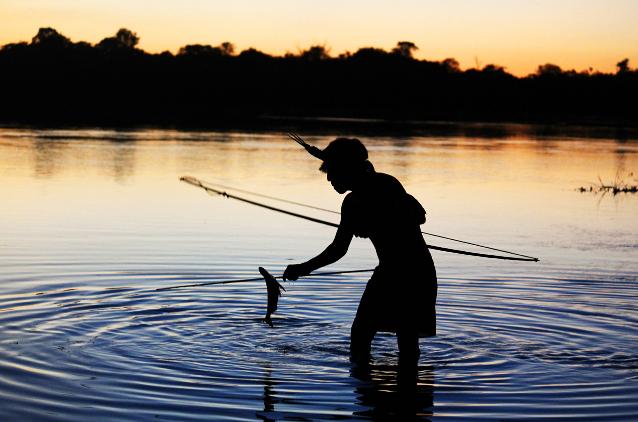
Yet the messages of the leaders in Piaraçu were not meant to dispirit, they were crafted to inspire. The stirring presence of such powerful groups speaking in one voice – large contingents of Kayapó from Mato Grosso and Pará, the assembly of Juruna, Enawene Nawe, Arara, Bororo, Xavante, Cinta Larga, Terena, Bakairi e Fulni-ô, among others ethnicities – forged an undeniable and collective will to resist. And this was the objective of the assembly: to make a last stand.
“I came here to join with you, my indigenous brothers and sisters, and to leave feeling stronger,” said Sheyla Juruna. “We need to fight together to strengthen our union, defend the rights of our peoples, to show the government that we exist and we must be respected! We are the owners of the Xingu – we will not allow it to be destroyed.”
Presiding over the assembly were two forceful leaders of the Kayapó of Mato Grosso: Megaron and Puiu Txukarramãe. After days of deliberation, debate, and affirmation, they demonstrated a keen understanding of the significance of their role in leading the next phase of resistance to Belo Monte. And with the commitment of the MXVPS and its Brazilian and international allies, as well as the leaders of the diverse indigenous groups assembled in Piaraçu to back Kayapó’s leadership, it was clear that grassroots resistance was far from over.
“We need to continue to unite. We are few, but we are strong,” said Chief Megaron Txukarramãe. “We need to fight together with our allies, organizations that represent Brazilian indigenous communities, and together with the 11 ethnicities [from the Xingu Basin] that are ready to struggle against any construction that will bring suffering to the people of the Xingu.”
What was made clear in the Piaraçu assembly is that Belo Monte is not simply a disaster for the Amazon but an announcement of future disasters for the rainforest’s rivers and communities. It is also a very real assault on the rights of all of Brazil’s indigenous peoples, including the right to be consulted and have a say over decisions that effect their lands, resources, and way of life. Called to defend these fundamental rights from further attack, the Kayapó know they will need to urgently lead resistance with the same success as two decades before.
“We will fight until the end to preserve our river and our lands,” avowed Puiu Txukarramãe.



